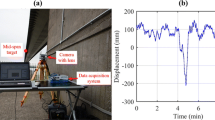Abstract
With the recent development of digital Micro Electro Mechanical System (MEMS) sensors, the cost of monitoring and detecting seismic events in real time can be greatly reduced. Ability of MEMS accelerograph to record a seismic event depends upon the efficiency of triggering algorithm, apart from the sensor’s sensitivity. There are several classic triggering algorithms developed to detect seismic events, ranging from basic amplitude threshold to more sophisticated pattern recognition. Algorithms based on STA/LTA are reported to be computationally efficient for real time monitoring. In this paper, we analyzed several STA/LTA algorithms to check their efficiency and suitability using data obtained from the Quake Catcher Network (network of MEMS accelerometer stations). We found that most of the STA/LTA algorithms are suitable for use with MEMS accelerometer data to accurately detect seismic events. However, the efficiency of any particular algorithm is found to be dependent on the parameter set used (i.e., window width of STA, LTA and threshold level).
Similar content being viewed by others
References
Alandry B, Dumas N, Latorre L, Mailly F and Nouet P (2009), “A Mems-based Multi-sensor Platform for Consumer Applications,” Ph.D. Research in Microelectronics and Electronics, PRIME, 320–323.
Allen R (1978), “Automatic Earthquake Recognition and Timing from Single Traces,” Bulletin Seismological Society of America, 68: 1521–1532.
Anderson DP, Cobb J, Korpela E, Lebofsky M and Werthimer D (2002), “SETI@home: An Experiment in Public-Resource Computing,” Communications of the ACM, 45: 56–61.
Botella F, Rosa-Herranz J, Giner JJ, Molina S and Galianamerino JJ (2003), “A Real-time Earthquake Detector with Prefiltering by Wavelets,” Computers & Geosciences, 29: 911–919.
Capon J, Greenfield RL and Lacoss R (1969), “Longperiod Signal Processing Results for the Large Aperture Seismic Array,” Geophysics Journal, 34: 305–329.
Chung AI, Neighbors C, Belmonte A, Miller M, Sepulveda HH, Christensen C, Jakka RS, Cochran ES and Lawrence JF (2011), “The Quake-Catcher Network Rapid Aftershock Mobilization Program Following the 2010 M8.8 Maule, Chile Earthquake,” Seismological Research Letters, 82(4): 526–532.
Chung PJ, Jost ML and Bohme JF (2001), “Estimation of Seismic-wave Parameters and Signal Detection using Maximum-likelihood Methods,” Computers & Geosciences, 27: 147–156.
Cochran ES, Lawrence JF, Christensen C and Chung A (2009b), “A Novel Strong Motion Seismic Network for Community Participation in Earthquake Monitoring,” IEEE Instrumentation and measurement Magazine, 12(6): 8–15.
Cochran ES, Lawrence JF, Christensen C and Jakka RS (2009a), “The Quake-catcher Network: Citizen Science Expanding Seismic Horizons,” Seismological Research Letters, 80(1): 26–30.
Farine M, Thorburn N and Mougenot D (2004), “General Application of MEMS Sensors for Land Seismic Acquisition-Is It Time?” The Leading Edge, 23: 246–250.
Freiberger W (1963), “An Approximate Method in Signal Detection,” Journal of Applied Mathematics, 20: 373–378.
Fretcher K and Sharon (1983), “Walsh Transforms in Seismic Event Detection,” IEEE Transactions on Electromagnetic Compatibility, 25.
Gibbons SJ and Ringdal F (2006), “The Detection of Low Magnitude Seismic Events Using Arraybased Waveform Correlation,” Geophysical Journal International, 165: 149–166.
Goforth T and Herrin E (1981), “An Automatic Seismic Signal Detection Algorithm Based on the Walsh Transform,” Bulletin Seismological Society of America, 71: 1351–1360.
Griscom DT (2007), “SeisMac, Turn Your Apple Laptop into A Self-contained Seismograph,” Seismological Research Letters, 77: 731–733.
Holland J (2003), “Earthquake Data Recorded by the MEMS Accelerometer,” Seismological Research Letters, 74: 20–26.
Houliston DJ, Waugh G and Laughlin J (1984), “Automatic Real-time Event Detection for Seismic Networks,” Computers & Geosciences, 10: 413–436.
Jakka RS, Cochran ES and Lawrence JF (2010), “Earthquake Source Characterization by the Isochrone Back Projection Method Using Near-source Ground Motions,” Geophysical Journal International, 182: 1058–1072.
Jen Havskov (2001), Instrumentation in Earthquake Seismology, Springer Publishing Company, 114–120.
Magotra N, Ahmed N and Chael E (1989), “Singlestation Seismic Event Detection and Location,” IEEE Transactions on Geoscience and Remote Sensing, 27: 15–23.
Richter CF and Freeman WH (1958), “Elementary Seismology,” Geological Journal, San Francisco, 2(2): 768–772.
Sharma BK, Kumar A and Murthy VM (2010), “Evaluation of Seismic Events Detection Algorithms,” Journal Geological Society of India, 75: 533–538.
Swindell H and Snell N (1977), “Station Processor Automatic Signal Detection System, Phase I: Final Report, Station Processor Software Development,” Texas Instruments Report No. ALEX (01)-FR-77-01.
Withers M, Aster R, Young C, Beiriger J, Harris M, Moore S and Trujillo J (1998), “A Comparison of Selected Trigger Algorithms for Automated Global Seismic Phase and Event Detection,” Bulletin Seismological Society of America, 88: 95–106.
Young C, Beiriger J, Harris M, Moore S, Trujillo J, Withers M and Aster R (1996), “The Waveform Correlation Event Detection System Project Phase I: Issues in Prototype Development and Testing,” Internal Report, Department of Energy, Office of Research and Development, NN20, 45 pp.
Author information
Authors and Affiliations
Corresponding author
Additional information
Supported by: IIT Roorkee under the Faculty Initiation Grant No. 100556
Rights and permissions
About this article
Cite this article
Jakka, R.S., Garg, S. Suitable triggering algorithms for detecting strong ground motions using MEMS accelerometers. Earthq. Eng. Eng. Vib. 14, 27–35 (2015). https://doi.org/10.1007/s11803-015-0004-7
Received:
Accepted:
Published:
Issue Date:
DOI: https://doi.org/10.1007/s11803-015-0004-7




